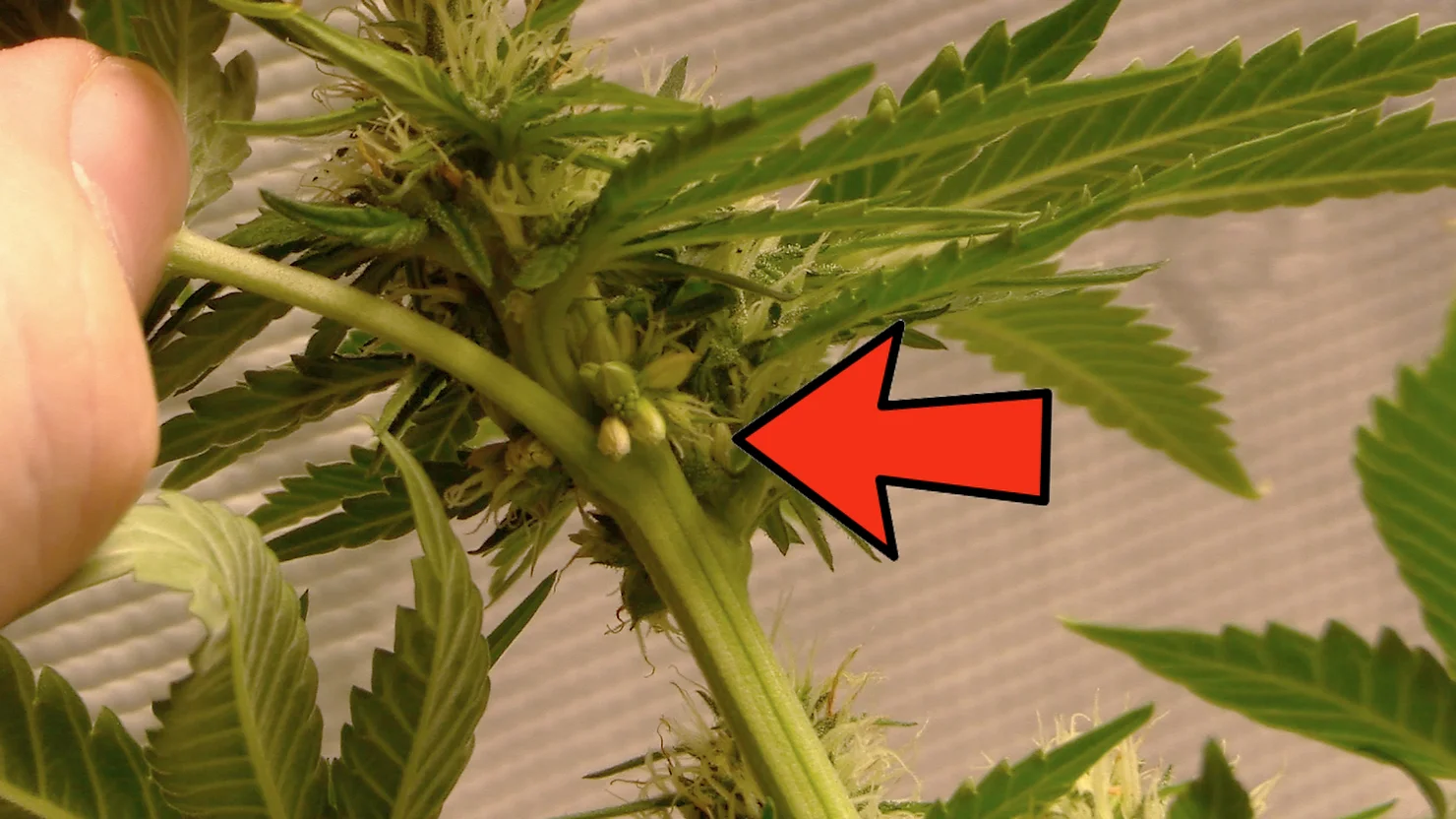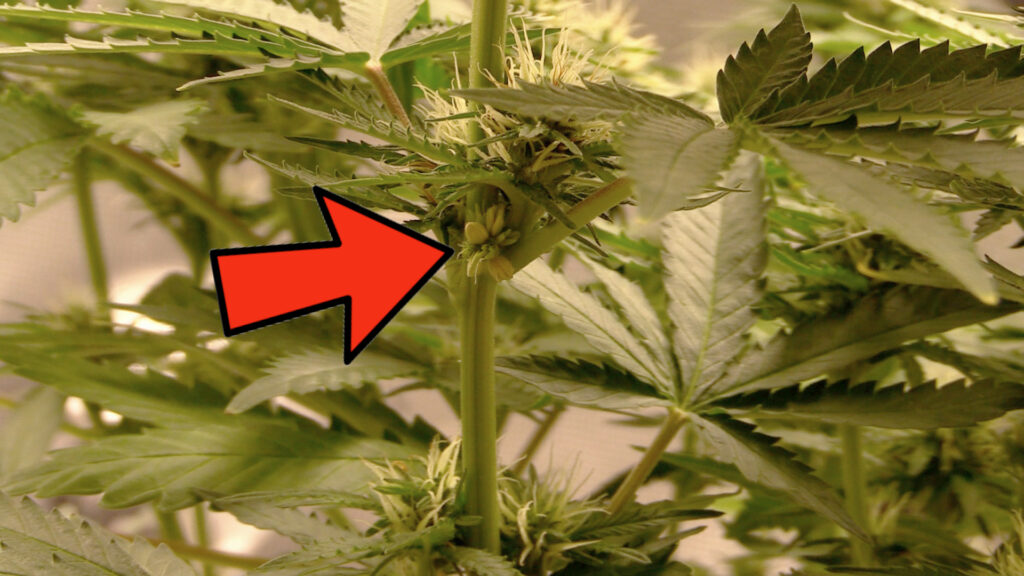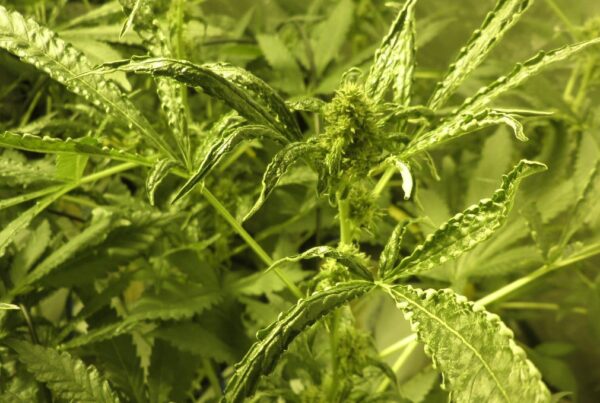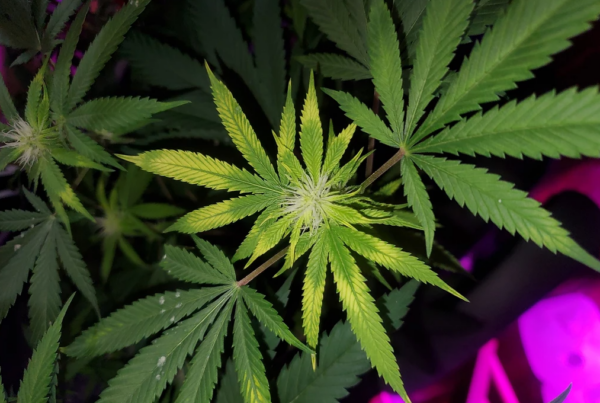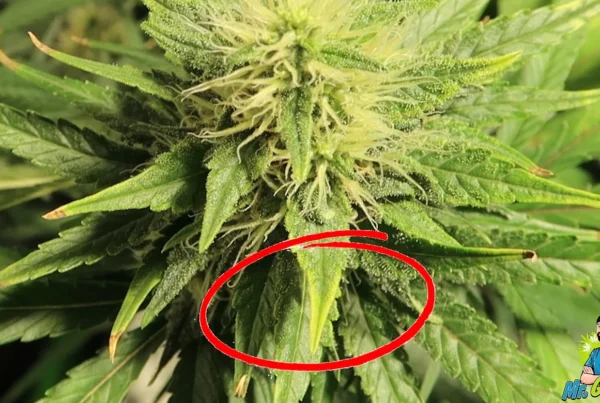If you are new to growing cannabis, you may have difficulty telling a female cannabis plant from a male cannabis plant. There is also a possibility that you are oblivious to the term ‘dioecious’. If you do not understand what hermaphrodite cannabis plants are and how to spot them, then you could accidently pollinate your entire garden. This will result in seeds forming inside those precious buds! This article will help you identify hermaphrodite cannabis plants and give you a few tips to avoid hermaphrodite cannabis plants in your grow room.
What are Hermaphrodite Cannabis Plants?
It’s time you get acquainted with some botanical terminology on your journey as a cannabis grower. Cannabis is among the 7% of the flower producing plant species (also called angiosperms) that are dioecious. What is dioecious? Simply put, it’s a plant that does not have male and female reproductive organs on the same plant – unlike monoecious plants. Monoecious plants have both reproductive organs on the same plant and can fertilize themselves. Dioecious plants, on the other hand, need to be in a pair to be fertilized. Although, there are instances where cannabis can develop both male and female reproductive organs; those plants are called hermaphrodite cannabis plants – aka hermies.
You may be perplexed as to why this should be of interest to you. The answer contains the key to better quality harvest. Therefore, as a cannabis grower, you must be able to identify male cannabis plants, female cannabis plants, and hermaphrodite cannabis plants.
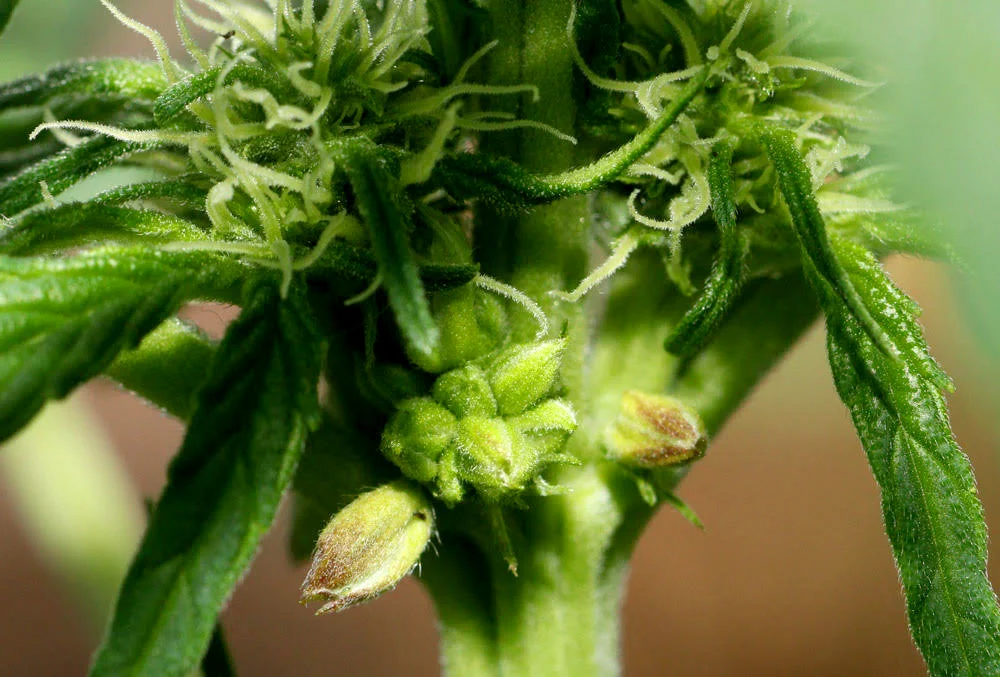
Why Identify Hermaphrodite Cannabis Plants?
If you want good-quality seedless flowers (Sinsemilla) with a high concentration of psychoactive agents, then you need to prevent your flowers from being pollinated. Since cannabis plants are dioecious, it makes your job as a grower easier with the exception of hermaphrodites. Let me break it down for you so you know how to identify a male cannabis plant from a female cannabis plant.
Fun Fact: Sinsemilla stems from two Spanish words, ‘Sin’ which means without and ‘Semilla’ which means seed.
Difference Between Male and Female Cannabis Plants
There is one major difference between female and male cannabis plants which is that female cannabis plants produce flowers (often referred to as buds). These buds render female plants valuable as they have the cannabinoids in their trichomes that make the cannabis psychoactive. Male plants, on the other hand, produce small pollen sacs which eventually open and release pollen. This pollen is used for breeding. You can typically identify if a plant is male or female after about 4 to 5 weeks in the vegetation stage. Although, some phenotypes don’t show signs of sex until early in the flowering stage.
Late in vegetation stage, cannabis plants develop pre-flowers and you have to take a very close look at them to identify the sex. Both flowers and pollen sacs can be found at the nodes. Although, the round and green pollen sacs do not have tiny hair whereas flowers have small hair, knows as pistils. If you want to be proactive and get the best harvest, start identifying sexes and segregating as fast as you can, since within three weeks, pollen sacs open up and fertilize the female plants growing flowers. Usually male to female ratio in regular seeds is one to one or 50-50.
Simple Three-Step Process to Identify Sex in Cannabis Plants:
- Use a microscope in the late vegetative stage and look closely for pre-flowers by the nodes.
- If pre-flowers have hair, tag the plant as female. If it has a hair-less pollen sac, tag the plant as male.
- Separate the males from females. Most growers kill off the males altogether.
Click here for more details on how to identify a male vs female.
Now that you know how to identify sex in cannabis plants, you may be wondering what to do about hermaphrodite plants that have mixed-sex and can self-fertilize themselves. Before you learn how to deal with hermies, it is important to know the types and causes of hermaphroditism.
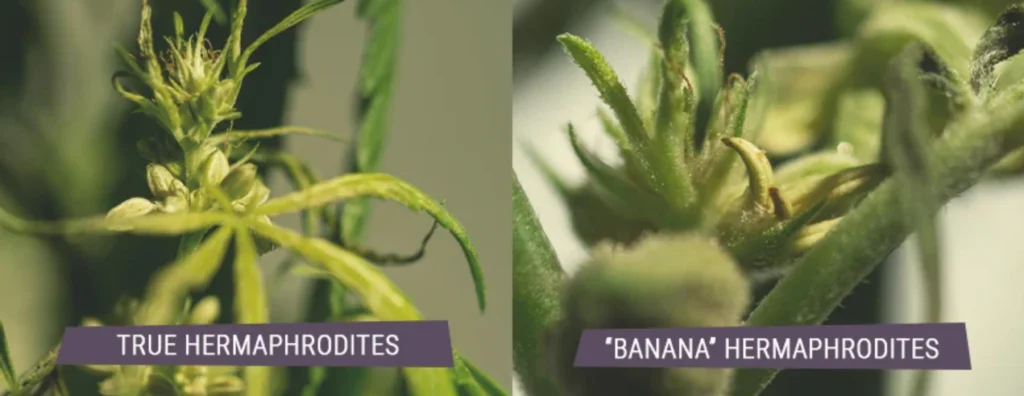
Types of Hermaphrodite Cannabis Plants
There is a twist to hermaphroditism in cannabis – it has two types. You can either have true hermaphrodites or you can have ‘bananas’. Although both types have one thing in common (they have both male and female reproductive organs), they differ in where these organs are located.
True hermaphrodites have pollen sacs and flowers on different nodes on the same plant, but banana hermaphrodites have a male reproductive part called the stamen popping out from within the flower. A bananas (or nanner) is essentially a bare or exposed stamen of the pollen sac which ultimately means that the pollen sac does not even have to burst to disperse its pollen – it is already exposed and ready to be dispersed. These nanners look like yellow bananas and can also grow in bunches. Although, there are chances of the pollen being sterile, you should get rid of nanners as soon as possible as they can pollinate the hermaphrodite plant as well as other plants in the grow room.
Causes of Hermaphroditism in Cannabis Plants
Hermaphroditism in cannabis plants can either be genetic or can be caused by stress. This stress can be in the form of light burn, nutrient deficiencies, root rot, heat, and more. Think of it as a plant’s survival instinct kicking in as a result of stress. They begin self-fertilizing to reproduce. The same thing can happen when a female plant has not been harvested on time; it self-pollinates to procreate. This phenomenon is also called rhodelization. It can also be genetic as the clone of a true hermaphrodite is very much likely to be a hermaphrodite. As a cannabis grower, you should be aware that the following can cause hermaphroditism in cannabis plants:
- Light Stress: When the light schedule is off or inconsistent, you can get bananas. If the lights are too bright and can potentially lead to light-burn, that can also result in bananas.
- Unstable Temperature: If the temperature in the grow room drops and rises very often or too much, it can trigger hermaphroditism.
- Nutrient Deficiencies: A weak plant that has a nutrient deficiency, diseases, root rot, and pH fluctuations is more likely to grow bananas.
Genetics is also a prominent cause, but it only happens if you do not purchase seeds from a good breeder. Seeds coming from hermaphrodites will also produce hermaphrodites. A good strain can go through a lot of stress without producing any bananas. Hence, buying seeds from a trusted breeder will help avoid this issue.
How to Avoid Hermaphroditism in Cannabis Plants
Since stress is a major cause of hermaphrodite cannabis plants, the best way to prevent your plant from showing signs of hermaphroditism is by ensuring everything is well in the grow room. As a grower, you can take various steps to ensure that you get the best harvest and prevent pesky bananas from growing in your potent and plump buds. Here is how you can avoid hermies in your grow room:
- Keep the Lights in Check: Stick to a light schedule as much as possible – especially during the flowering stage. Make use of light timers if you have them. Avoid light leaks by ensuring that no artificial or external light can get to your cannabis plants while they are in their 12-hour dark period. This dark period is critical to keep the plants stress-free.
- Keep the Temperature in Check: Do not let the temperature in the grow room drop or rise by considerable degrees. During the flowering stage, keep it between 65°-86°F (18°-30°C). You can start with 75°F/24°C during the day and lower it to 65°F/18°C during the night. Check the temperature around the top of the plant by hanging a temperature monitor into the canopy; make sure it is not too hot.
- Avoid Light-Burn: Do a bit of research on the lights that are using in your grow room. Read the instructions when setting up the lights and always go by the light distance that the manufacturer recommends. Use the hand test to make sure it does not get too hot at the top of the canopy – especially if you are using high-power LED or HID grow lights.
- Keep Nutrients in Check: Since nutrient deficiencies can stress your cannabis plants, make sure that your plants are healthy and are not suffering from any nutrient deficiencies. Do not go overboard with the nutrients as it can cause nutrient burn and/or a toxicity. The key is to find the right balance and monitoring your plants regularly to catch any issues early on.
- Prevent Pests and Diseases: Keep pests out of the grow room at all costs – particularly the ones that make plants too weak to fight diseases.
- Keep the pH in Check: Regularly monitor the pH as pH fluctuations can cause stress and nutrient lockout.
- Harvest on Time: Harvest on time to keep the plant from growing bananas to self-pollinate.
- Do Not Overcrowd: Have enough space between plants to avoid root stress.
You cannot do much if the cause for the hermaphrodite is genetics, but when it comes to stress, you can certainly avoid that by using the tips given above. You will be in for a smoother journey if you purchase feminized seeds from a good seed bank. If you do end up finding a hermaphrodite in your garden, it is not recommended to breed with it as the offspring will also be hermies. It is best to get rid of them to avoid pollinating the other plants in the garden – which will ultimately result in seedy buds. If you use the tips in this article to identify sex and to avoid hermaphrodites, you will be on track to get some potent, seedless buds!
![]()

